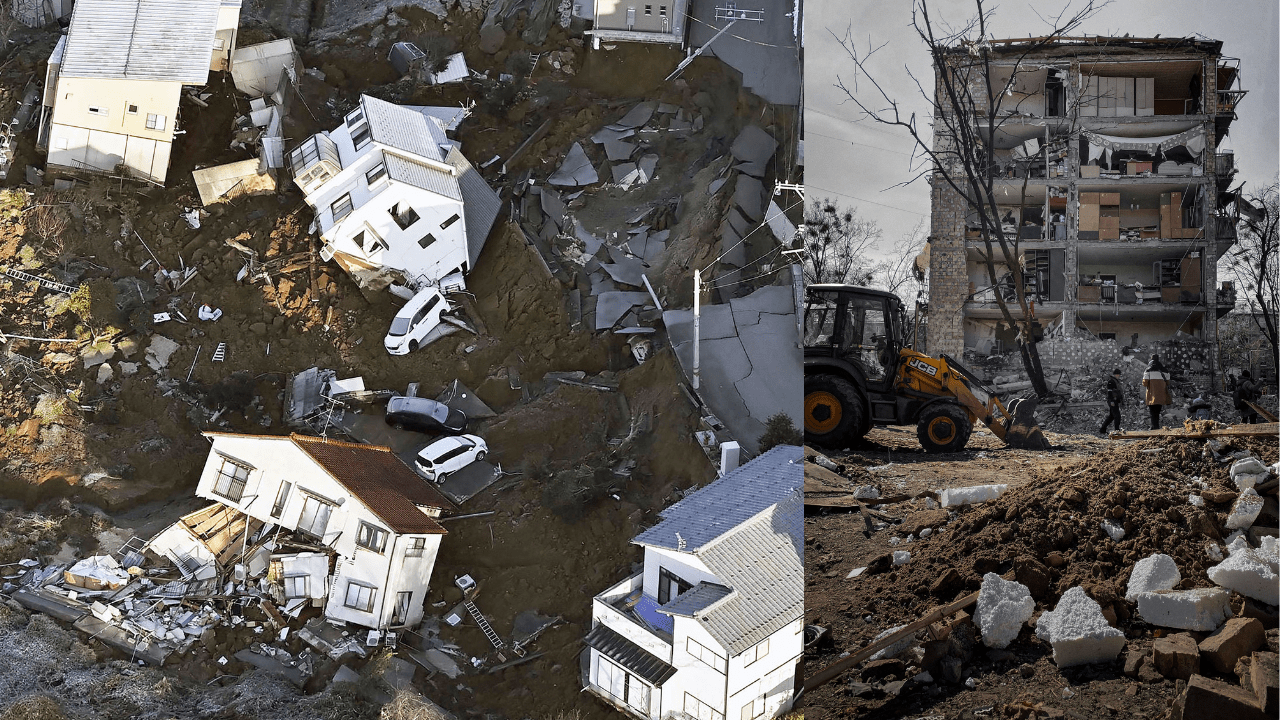Devastating Earthquake Strikes Japan on New Year’s Day
Rescue Operations Underway for Missing Persons
Following the disastrous 7.6 magnitude earthquake that hit Japan’s Noto peninsula on New Year’s Day, rescue teams are racing against time to find 242 people reported missing. The critical 72-hour window for finding survivors concluded late Thursday, but efforts continue unabated.
Rising Death Toll and Intensified Rescue Efforts
As of Friday, the death toll has risen to 92. In response to the crisis, Japan’s Self-Defense Forces have doubled their involvement, now deploying 4,600 troops for rescue and relief operations, as per Kyodo news agency reports.
Impact on Suzu and Wajima Towns
The quake’s impact was especially severe in the towns of Suzu and Wajima. Many inhabitants are believed to be trapped under the rubble of their collapsed homes. These towns, known for their wooden structures, were particularly vulnerable to the earthquake’s force.
Challenges in Utility Restoration and Access
The natural disaster has left tens of thousands without electricity and water. Further complicating the situation, landslides and blocked roads have isolated hundreds from receiving necessary aid.
Japanese Government’s Commitment to Rescue Efforts
Prime Minister Fumio Kishida has reaffirmed the government’s dedication to the rescue operations. He has urged all involved to make every effort to reach affected communities, highlighting the importance of not leaving any stone unturned.
Logistical Hurdles in Relief Work
According to Musubi Yata of the Japanese Red Cross Society, the main challenge lies in accessing the most affected areas. The roads are obstructed with debris, and the ongoing aftershocks pose additional risks to the rescue teams.
Tsunami and Government Aid
The earthquake also triggered a small tsunami, flooding approximately 296 acres of land. The Japanese government has allocated 4.74 billion yen (about $34 million) to assist the victims of the earthquake and tsunami.
Ground Self Defense Force’s Role in Relief
Images from the Japan Ground Self Defense Force show their active involvement in relief efforts. These include transporting food, water, and other necessities, as well as clearing debris from roads. So in one poignant image, troops are seen carrying a survivor across a snow-covered path.
FAQs
- What was the magnitude of the earthquake? The earthquake that struck Japan’s Noto peninsula on New Year’s Day was of magnitude 7.6.
- How many people are missing, and what is the current death toll? As of the latest reports, 242 people are missing, and the death toll has risen to 92.
- Which areas were most affected by the earthquake? The towns of Suzu and Wajima were among the most affected, with many wooden structures collapsing and residents feared trapped.
- What challenges are the rescue teams facing? The main challenges include accessing remote and badly hit areas due to landslides and blocked roads, and the ongoing risk of aftershocks.
- What measures has the Japanese government taken in response to the earthquake? The government has deployed 4,600 troops from the Self-Defense Forces for rescue and relief operations, and has allocated 4.74 billion yen for victim assistance. Additionally, efforts are ongoing to restore utilities and provide basic necessities to those affected.
Conclusion:
On Japan Earthquake
The earthquake that struck Japan on New Year’s Day has left a trail of destruction, particularly in the Noto peninsula. With a rising death toll, numerous people missing, and widespread damage to infrastructure, the focus remains on rescue operations and providing immediate relief to affected areas. Japan’s history with earthquakes has equipped it with a strong disaster response system, but the challenges posed by natural disasters continue to be daunting.
Discover More Blogs:

